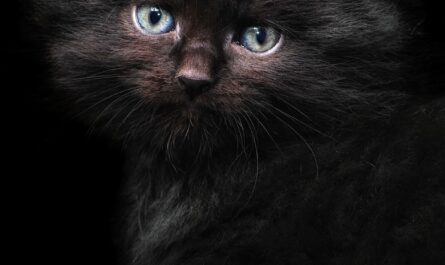
Yellow and black potter wasps, characterized by their striking coloration and distinctive nesting behavior, play a significant role in the ecosystem. These wasps, scientifically classified under the Eumenidae family, contribute to the delicate balance of nature through their unique habits and beneficial actions.
In various ecosystems worldwide, these wasps are recognized for their vivid yellow and black markings, marking them as an intriguing species among the vast array of insects. Unlike social wasps, yellow and black potter wasps are solitary creatures, each female crafting her mud nests, an exceptional trait contributing to their ecological importance.
Stay tuned as we delve deeper into the behavior, habitat, and nesting habits of these fascinating insects, shedding light on their significance in our environment and the interaction points they have within it.
The behavior of Yellow and Black Potter Wasps
Yellow and black potter wasps, known for their solitary nature, exhibit fascinating behavioral patterns that distinguish them within the insect realm.
Foraging Patterns and Prey Selection
These wasps display a unique hunting strategy, preying primarily on caterpillars and spiders. They skillfully capture their prey, employing a paralyzing sting to immobilize them. Once subdued, the wasps transport the incapacitated insects to their meticulously crafted mud nests.
Nesting Rituals and Lifecycle
The construction of mud nests by female yellow and black potter wasps is an impressive feat. Each female meticulously shapes and builds her vase-shaped nest using mud, carefully provisioning it with the captured prey before laying her eggs.
Upon completion, the female wasp seals the nest, ensuring the protection and sustenance of her offspring. This nurturing environment enables the larvae to develop within the provisioned prey until they emerge as mature adults, continuing the cycle.
Non-Aggressive Nature
Despite their ability to sting when threatened, yellow and black potter wasps generally exhibit a non-aggressive demeanor towards humans and pets. They only resort to defensive measures when they perceive imminent danger or disturbance to their nests.
Habitat Preferences
Yellow and black potter wasps are adaptable insects, thriving in diverse environments. They’re commonly found in gardens, woodlands, meadows, and even urban settings. Their habitat selection is closely tied to the availability of their preferred prey and suitable conditions for constructing their unique nests.
Landscape Diversity
Their ability to inhabit various landscapes highlights their adaptability and resilience. Gardens, with their rich flora and fauna, often provide an ideal setting, offering an abundance of potential prey for these wasps. Woodlands and meadows also attract these insects due to the presence of caterpillars and spiders, key elements in their diet.
Urban Resilience
Even in urban environments, yellow and black potter wasps find niches to thrive. Parks, green spaces, and gardens within cities become their hunting grounds, showcasing their ability to coexist with human settlements.
Adaptation for Survival
Their adaptability across different habitats illustrates their vital role in maintaining ecological balances, controlling insect populations, and contributing to the intricate web of life within various ecosystems.
Unique Nest Construction
Yellow and black potter wasps exhibit exceptional craftsmanship in constructing their characteristic vase-shaped mud nests. Each female wasp meticulously collects and shapes mud particles to craft these distinctive structures.
Purpose and Design
These nests serve as protective chambers for their developing offspring. The female wasp provisions the nest with the paralyzed prey, ensuring a vital food source for the growing larvae. The well-sealed chambers safeguard the larvae until they complete their development stages.
Nesting Sites
The choice of nesting sites is a crucial aspect of their lifecycle. These wasps typically select sheltered locations, such as under eaves, within crevices, or attached to vegetation. The choice of site ensures protection against harsh weather conditions and potential predators.
Lifecycle within the Nest
The sealed mud nests provide a secure environment for the eggs to hatch and the larvae to develop. The provisioned prey sustains the larvae until they mature into adult wasps, emerging from the nests to continue the life cycle.
Role in the Ecosystem
The construction of these nests by yellow and black potter wasps not only aids in their reproduction but also plays a vital role in insect population control within the ecosystem.
Interaction with Pets and Safety Measures
Potential Encounters with Pets
While yellow and black potter wasps typically do not seek conflict, there might be instances where pets encounter these insects. Pets, in their curiosity or playfulness, may inadvertently disturb or provoke these wasps, leading to defensive reactions.
Safety Measures for Pet Owners
- Maintain awareness: Educate pet owners about the presence of these wasps in certain environments and advise them to be vigilant during outdoor activities.
- Avoid disturbances: Advice on preventing pets from investigating or disturbing the nests to minimize potential confrontations.
- First aid: Share basic first aid measures in case of a pet getting stung by a wasp, such as cleaning the area and seeking veterinary care if needed.
Coexistence and Preventive Measures
Encourage a harmonious coexistence between pets and these insects by implementing preventive measures:
- Regular inspections: Recommend routine checks of outdoor areas where pets frequent to spot potential nests.
- Strategic landscaping: Suggest modifying the landscape design to discourage nesting sites close to pet areas.
Conclusion
While yellow and black potter wasps play a crucial role in the ecosystem, maintaining pet safety is paramount. Educating pet owners about preventive measures and safety protocols ensures a safe environment for both pets and these beneficial insects.



